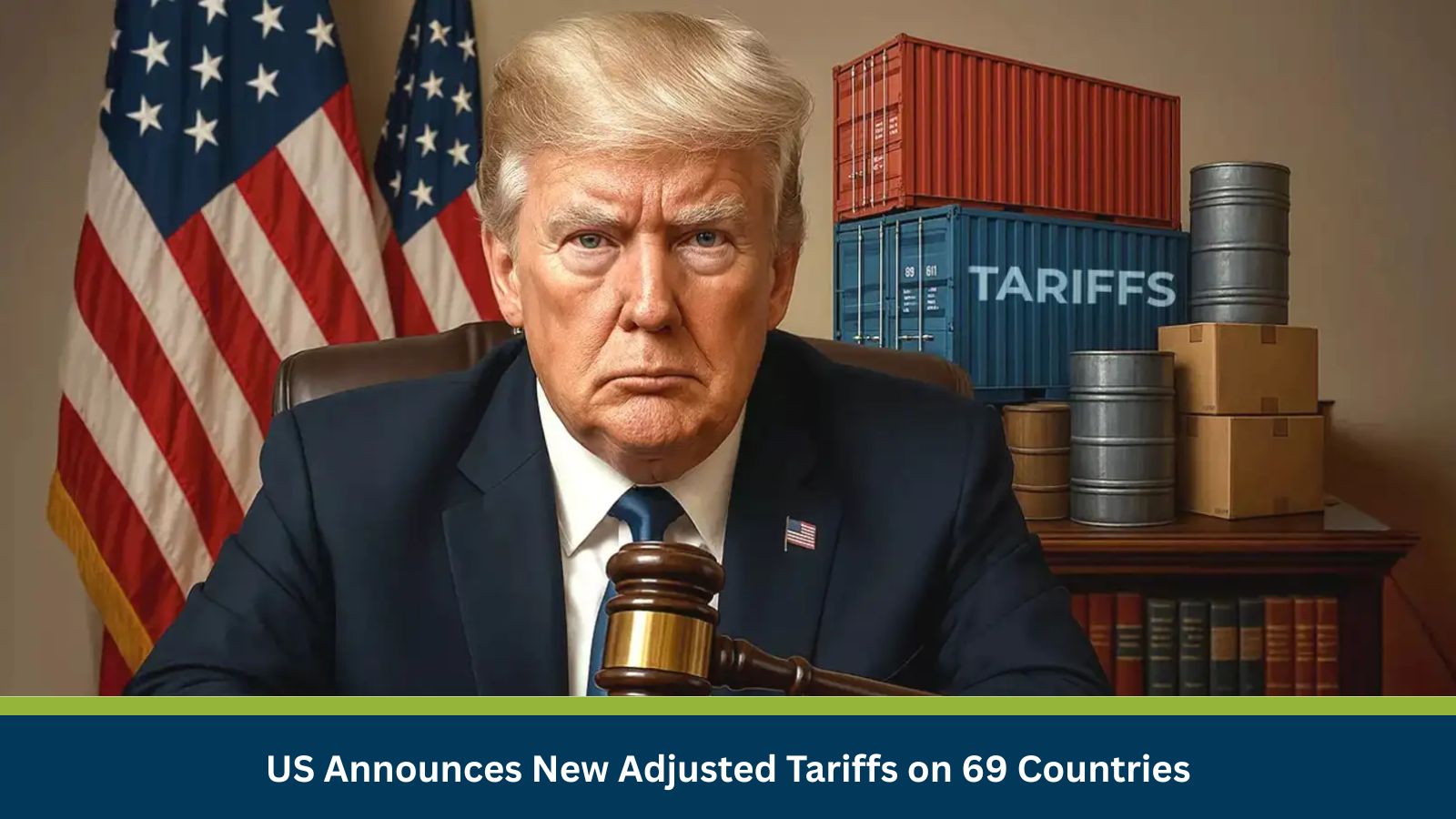A sweeping tariff adjustment by the United States targets exports from key trading partners including India, Brazil, Canada, and Mexico, with significant implications for global trade and diplomacy.
What Is Happening?
Ahead of a major trade deal deadline, US President Donald Trump announced adjusted tariffs on 69 countries, with new rates ranging from 10% to 41% on select exports. The revised tariffs set to take effect from 7 August aim to strengthen the US economy, increase revenue, and force trade renegotiations.
While South Korea managed to secure a trade deal before the 1 August deadline, several others including India, Brazil, and Canada failed to reach an agreement. Certain goods shipped before the cut-off date will be exempt. Countries not named in the official list will face a flat 10% US import tax lower than what was initially proposed.
Why?
The new tariffs reflect a dual agenda: to exert negotiating pressure and revive domestic manufacturing. Countries unable to meet Washington’s trade demands now face steeper costs for exporting to the US.
- Canada saw tariffs increase from 25% to 35%, citing fentanyl trafficking concerns. However, the USMCA pact remains unaffected.
- Mexico was given a 90-day reprieve to negotiate a broader deal, although 50% tariffs on metals remain.
- India was hit with a 25% tariff, compounded by penalties linked to its Russian oil imports and agricultural market protections.
- Brazil faced a 50% tariff but secured exemptions for key sectors like aviation, energy, and citrus exports.
Consequences Across Sectors and Nations
India
- Likely economic impact on pharmaceuticals, textiles, leather, and auto sectors.
- Tariff levels now higher than those for Vietnam and China, potentially reducing India’s competitiveness in export supply chains.
Brazil
- Exemptions for vital exports may soften the blow.
- Strong BRICS ties and domestic resilience could help offset external shocks.
Canada & Mexico
- Despite exemptions under USMCA, both face ongoing political and economic negotiations.
- Mexico must still contend with metal tariffs, while Canada grapples with bilateral strain tied to drug-related trade clauses.
Medium-Term Outlook: Global Trade Realignment
While Trump’s administration argues that the tariff strategy will boost US jobs and revenue, early signs point to rising inflation and consumer price increases domestically.
For affected countries, the path forward lies in:
- Accelerated trade talks and diversification of export markets
- Strategic bilateral alliances and regional trade pacts
- Contingency planning to safeguard core export sectors
Stay Ahead of Threats with datasurfr Predict
MitKat’s datasurfr delivers accurate, real-time, and contextualised data to help organisations respond swiftly to physical, environmental, and cyber threats.
With datasurfr Predict, our AI Agent not only provides context for unfolding events but also analyses vetted historical data to forecast how events are likely to evolve and their potential impact using industry and location-specific probabilistic scores.
Book a free demo today and see how datasurfr Predict can transform your risk preparedness: https://mitkatadvisory.com/why-datasurfr/






